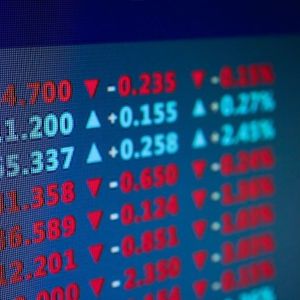In the fast-paced world of Forex and cryptocurrency trading, keeping a close watch on global economic indicators is paramount. Today, we delve into a significant update from the East – the People’s Bank of China (PBOC) has announced its latest daily fixing of the USD/CNY reference rate . This seemingly minor adjustment carries weight, influencing not just the Yuan’s trading band but also signaling broader economic policy directions. Let’s break down what this means for you, the crypto-savvy investor, and the wider financial landscape. Unpacking the PBOC’s USD/CNY Reference Rate Adjustment On Monday, February 17, 2025, the PBOC set the USD/CNY reference rate at 7.1702. This is a slight adjustment from the previous fixing of 7.1706 on Friday. While the change might appear minimal at first glance, these daily fixings are crucial tools employed by the PBOC to manage the Yuan’s exchange rate against the US dollar. For context, Reuters’ estimates placed the expected rate much higher at 7.2617, highlighting the PBOC’s firm hand in guiding the currency. This daily rate acts as the central point around which the Yuan can fluctuate in onshore trading, effectively managing volatility and signaling the central bank’s intentions for currency stability. What is the Role of the PBOC and Why Does the Reference Rate Matter? Understanding the significance of the USD/CNY reference rate requires insight into the PBOC’s functions. Think of the PBOC as China’s equivalent of the Federal Reserve or the European Central Bank. However, its operational framework and objectives are uniquely tailored to China’s economic structure. Key Objectives of the People’s Bank of China: Price Stability: This is a core mandate, encompassing both domestic price levels and, crucially, exchange rate stability . Maintaining a stable Yuan is vital for China’s trade-oriented economy. Economic Growth: The PBOC plays a role in fostering sustainable economic expansion through its monetary policies. Financial Reform and Development: The PBOC is tasked with modernizing China’s financial system, including opening up markets and promoting healthy financial sector growth. Unlike many Western central banks that prioritize autonomy, the PBOC operates under a different structure. PBOC Ownership and Governance: State-Owned: The PBOC is owned by the state of the People’s Republic of China. This means it is not an independent institution in the same way as, for example, the US Federal Reserve. Communist Party Influence: The Chinese Communist Party (CCP) exerts significant influence on the PBOC’s direction. The CCP Committee Secretary, nominated by the State Council Chairman, holds a key position, even alongside the Governor. Currently, Mr. Pan Gongsheng holds both roles, indicating a consolidation of leadership. Decoding the PBOC’s Monetary Policy Toolkit The PBOC employs a diverse set of monetary policy instruments, some of which differ from those typically used by Western central banks. These tools are instrumental in achieving its objectives, including influencing the USD/CNY reference rate indirectly and maintaining exchange rate stability . Primary Policy Tools of the PBOC: Seven-day Reverse Repo Rate (RRR): This is a short-term liquidity management tool. Medium-term Lending Facility (MLF): Provides medium-term funding to banks. Foreign Exchange Interventions: Direct buying or selling of foreign currency to influence the Yuan’s value. Setting the daily USD/CNY reference rate is a key aspect of this intervention. Reserve Requirement Ratio (RRR): The percentage of deposits banks must hold as reserves, impacting lending capacity. The Loan Prime Rate (LPR): China’s Benchmark Interest Rate It’s important to note the Loan Prime Rate (LPR) in the context of Chinese monetary policy. The LPR serves as China’s benchmark interest rate, akin to the Fed Funds rate in the US or the policy rates in other major economies. Changes to the LPR directly affect borrowing costs for businesses and individuals, influencing loan and mortgage rates, as well as savings interest. Critically, by adjusting the LPR, the PBOC can also indirectly influence exchange rates , including the USD/CNY reference rate , by impacting capital flows and market sentiment. Private Banks in China: A Growing Sector While China’s financial system is traditionally state-dominated, the landscape is evolving. The presence of private banks, though still a small segment, indicates a gradual shift. As of now, China has 19 private banks. Key Points about Private Banks in China: Emerging Sector: Private banks are a relatively recent development, with the first licenses granted in 2014. Digital Focus: Leading private banks like WeBank (backed by Tencent) and MYbank (backed by Ant Group) are digital lenders, leveraging technology to reach a broader customer base. Limited Scale: Despite their growth, private banks still represent a small fraction of the overall financial system compared to state-owned giants. Why This Matters for Forex and Crypto Traders For those involved in Forex trading, particularly in Asian currency pairs, and for cryptocurrency enthusiasts who monitor global economic trends, the PBOC’s USD/CNY reference rate is a vital indicator. It reflects China’s monetary policy stance and its approach to managing its currency. A stable or appreciating Yuan can have ripple effects across Asian markets and potentially influence global risk sentiment, which in turn can impact cryptocurrency valuations. While the direct link between the USD/CNY reference rate and crypto prices is not always immediate or obvious, understanding these macroeconomic factors provides a crucial layer of context for informed trading and investment decisions. Monitoring these announcements allows traders to anticipate potential shifts in market dynamics and adjust their strategies accordingly. In Conclusion: Staying Informed in a Global Market The PBOC’s daily setting of the USD/CNY reference rate is more than just a technical adjustment; it’s a pulse on the world’s second-largest economy and its approach to currency management. By keeping abreast of these developments, traders and investors gain a deeper understanding of the forces shaping global financial markets. In the interconnected world of Forex and cryptocurrencies, knowledge is power, and understanding the nuances of central bank actions is a powerful tool indeed. To learn more about the latest Forex market trends, explore our article on key developments shaping global currencies and macro-economic indicators.


















